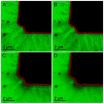(Press-News.org) STANFORD, Calif. — Emergency rooms are less likely to transfer critically injured patients to trauma centers if they have health insurance, according to a new study by researchers at the Stanford University School of Medicine.
The counterintuitive finding suggests that insured patients are more at risk for receiving sub-optimal trauma care than uninsured patients are.
Although a majority of severely injured trauma patients are initially taken to trauma centers, at least one-third are taken to non-trauma centers. In these cases, emergency room doctors must assess the injuries and decide whether to admit the patient or transfer them to a trauma center. Their decision usually depends on the injury — how severe it is, what the cause was, or whether the hospital has specialists to handle particular types of injuries.
But the patient's insurance status also influences that decision, according to the study, which will be published online Feb. 19 in JAMA Surgery.
Stanford researchers analyzed more than 4,500 trauma cases reported at 636 hospitals in a 2009 Nationwide Emergency Department Sample put together by the U.S. Department of Health and Human Services.
They found that insured patients initially taken to a non-trauma center had a 13 to 15 percent higher rate of admission — and were likely at risk for receiving worse care — than uninsured patients.
"Insured patients may, ironically, get worse outcomes because they are taken care of at a center where there's a lower volume of resources for critically injured patients," said M. Kit Delgado, MD, the lead author and a former Stanford emergency medicine instructor. Delgado is now an emergency care research scholar at the University of Pennsylvania.
"We hypothesize that non-trauma center hospitals are more likely to want to admit insured patients presumably because they can get reimbursed for their services," he said.
Traumatic injuries — such as gunshot wounds or injuries from car accidents — are the most common causes of death in the United States among people younger than 44.
Timely access to a specialized trauma center can save lives. The risk of a severely injured patient dying at a level-1 trauma center, which has the highest level of trauma care, is 25 percent lower than at a non-trauma center, a 2006 New England Journal of Medicine study found.
Designated trauma centers are equipped with trained specialists and resources ready to handle critical injuries. Level-1 trauma centers have a full array of in-house surgeons and nurses working round-the-clock, specialists such as neurosurgeons and orthopedic trauma surgeons on call, designated operating rooms and medical equipment, and a 24/7 blood bank operation, apart from educational and preventive outreach programs.
The current study is one of the first population-level analyses to reveal what happens to severely injured patients seen at non-trauma centers, said Nancy Wang, MD, senior author of the study and associate professor of emergency medicine at Stanford.
"Finding disparities in quality of trauma care based on insurance is very disturbing," said Wang. "It is important for researchers to identify and call attention to these disparities in access to care and outcomes so that all people can receive the appropriate, high-quality care regardless of their insurance status."
Wang — who is also associate director of pediatric emergency medicine — and colleagues previously found disparities in access to trauma care for children and the elderly in the state of California, with insurance status being one of the influencing factors.
"It is important that the community understands this trend so that it can be changed," she said.
The current study also found that, in addition to insured patients, older patients and those brought to urban teaching hospitals and high-volume emergency rooms had lower chances of being transferred to a trauma center.
Emergency-room encounters should be more closely monitored, the authors suggest, to ensure that patients get the right kind of care regardless of whether they can pay for it. Splitting costs between hospitals and trauma centers is another solution; it may help hospitals cover any financial loss that they expect from sending patients away.
"Study after study has shown that the more patients that a trauma team takes care of, the more experience they get — and their outcomes are going to be better," Delgado said.
Each state has different rules for designating a hospital as a trauma-care facility. Designated hospitals are reviewed by the American College of Surgeons to verify that they have all the resources listed in the association's trauma-care guidelines.
The trauma-care guidelines also spell out the steps emergency physicians should follow to decide whether an injured patient needs to be transferred.
But emergency physicians often fail to follow these guidelines, a recent University of Pittsburgh study revealed. Earlier studies have also shown that between 30 and 70 percent of all patients who meet the criteria for transfer are instead held back at non-trauma centers.
"Some of it has to do with failure to identify which conditions would do better at a trauma center, and some of it has to do with practice patterns — what the hospital is used to taking care of on its own, " Delgado said.
The implications are startling. But researchers are only now able to investigate these trends because population-wide emergency department data from non-trauma centers have only recently become available.
Delgado also acknowledged that with this database, there's no way to confirm if insured patients are receiving worse outcomes because they are being kept back.
"It's something we are hoping to figure out next," he said.
Another question that Delgado plans to explore is how much patients know about their options.
"We're doing research right now to figure out what role patients' and families' preferences play in the transfer decision," he said. "People who have insurance may not realize that they could do better if they are transferred."
INFORMATION:
The study was supported by the National Institutes of Health (grant UL1RR025744).
The other Stanford authors of the study are medical student Michael Yokell; assistant professor of surgery Kristan Staudenmayer, MD; David Spain, MD, professor of surgery and the Carol and Ned Spieker Professor; and Tina Hernandez-Boussard, PhD, assistant professor of surgery.
Information about Stanford's Department of Surgery, which also supported the work, is available at http://surgery.stanford.edu.
The Stanford University School of Medicine consistently ranks among the nation's top medical schools, integrating research, medical education, patient care and community service. For more news about the school, please visit http://mednews.stanford.edu. The medical school is part of Stanford Medicine, which includes Stanford Hospital & Clinics and Lucile Packard Children's Hospital. For information about all three, please visit http://stanfordmedicine.org/about/news.html.
Print media contact: Sara Wykes at (650) 721-6263 (swykes@stanfordmed.org)
Broadcast media contact: Margarita Gallardo at (650) 723-7897 (mjgallardo@stanford.edu)
Insurance status may influence transfer decisions in trauma cases, Stanford study reveals
2014-02-19
ELSE PRESS RELEASES FROM THIS DATE:
HPV vaccination is associated with reduced risk of cervical lesions in Denmark
2014-02-19
A reduced risk of cervical lesions among Danish girls and women at the population level is associated with use of a quadrivalent HPV vaccine after only six years, according to a new study published February 19 in the Journal of the National Cancer Institute.
Two HPV vaccines are currently available and have proven to be highly effective against HPV16/18-associated cervical cancer. One of these vaccines, a quadrivalent vaccine, was licensed in Denmark in 2006, and it was subsequently incorporated into general childhood vaccination programs for girls free of charge and ...
Whole genome analysis, stat
2014-02-19
Although the time and cost of sequencing an entire human genome has plummeted, analyzing the resulting three billion base pairs of genetic information from a single genome can take many months.
In the journal Bioinformatics, however, a University of Chicago-based team—working with Beagle, one of the world's fastest supercomputers devoted to life sciences—reports that genome analysis can be radically accelerated. This computer, based at Argonne National Laboratory, is able to analyze 240 full genomes in about two days.
"This is a resource that can change patient management ...
Study shows in vivo endomicroscopy improves detection of Barrett's esophagus-related neoplasia
2014-02-19
DOWNERS GROVE, Ill. – February 19, 2014 – New research shows that the addition of confocal laser endomicroscopy to high-definition white-light endoscopy enables improved real-time endoscopic diagnosis of Barrett's esophagus dysplasia (neoplastic tissue) by using targeted biopsies of abnormal mucosa to reduce unnecessary mucosal biopsies and potentially reduce costs. It may also positively influence patient care by changing the plan for immediate endoscopic management. The study appears in the February issue of GIE: Gastrointestinal Endoscopy, the monthly peer-reviewed scientific ...
RXTE reveals the cloudy cores of active galaxies
2014-02-19
VIDEO:
Zoom into the cloudy heart of an active galaxy. This animation shows an artist's rendition of the cloudy structure revealed by a study of data from NASA's Rossi X-Ray Timing...
Click here for more information.
Picture a single cloud large enough to span the solar system from the sun to beyond Pluto's orbit. Now imagine many such clouds orbiting in a vast ring at the heart of a distant galaxy, occasionally dimming the X-ray light produced by the galaxy's monster black ...
NuSTAR helps untangle how stars explode
2014-02-19
For the first time, an international team of astrophysicists, including Lawrence Livermore National Laboratory scientists, have unraveled how stars blow up in supernova explosions.
Using NASA's Nuclear Spectroscopic Telescope Array (NuSTAR) – a high-energy X-ray observatory - the international collaboration created the first-ever map of radioactive material in a supernova remnant, named Cassiopeia A, or Cas A for short. The findings reveal how shock waves likely rip apart massive dying stars, and ultimately end their lives.
A supernova is the cataclysmic death of a ...
REACT clinical trial supports new approach of accelerated treatment for Crohn's disease
2014-02-19
The final results from an international clinical trial involving nearly 2,000 patients with Crohn's disease support the use of a new management strategy referred to as accelerated step-care as a best practice for the care of active Crohn's disease. The REACT (Randomized Evaluation of an Algorithm for Crohn's Treatment) study, led by Robarts Clinical Trials at Western University (London, Canada) provides valuable new insights for community gastroenterologists which should benefit patients. The results of the study will be presented at the European Crohn's and Colitis Organisation ...
ORNL microscopy system delivers real-time view of battery electrochemistry
2014-02-19
OAK RIDGE, Tenn., Feb. 19, 2014 -- Using a new microscopy method, researchers at the Department of Energy's Oak Ridge National Laboratory can image and measure electrochemical processes in batteries in real time and at nanoscale resolution.
Scientists at ORNL used a miniature electrochemical liquid cell that is placed in a transmission electron microscope to study an enigmatic phenomenon in lithium-ion batteries called the solid electrolyte interphase, or SEI, as described in a study published in Chemical Communications.
The SEI is a nanometer-scale film that forms ...
Many Texans struggling to pay for health service as Affordable Care Act is about to launch
2014-02-19
HOUSTON – (Feb. 19, 2014) – Many Texans were struggling to pay for basic health services on the eve of the launch of the Affordable Care Act's Health Insurance Marketplace, according to a report released today by Rice University's Baker Institute for Public Policy and the Episcopal Health Foundation. The report also found that even those with health insurance reported dissatisfaction with the cost and availability of services. Most Texans expect more of the same in 2014.
The Health Reform Monitoring Survey (HRMS)-Texas report is based on the HRMS, a national project that ...
Molecular aberration signals cancer
2014-02-19
Several scientists, including one at Simon Fraser University, have made a discovery that strongly links a little understood molecule, which is similar to DNA, to cancer and cancer survival.
EMBO Reports, a life sciences journal published by the European Molecular Biology Organization, has just published online the scientists' findings about small non-coding RNAs.
While RNA is known to be key to our cells' successful creation of proteins, the role of small non-coding RNAs, a newly discovered cousin of the former, has eluded scientific understanding for the most part. ...
Cell therapy shows remarkable ability to eradicate cancer in clinical study
2014-02-19
NEW YORK, February 19, 2014 — Investigators from Memorial Sloan Kettering Cancer Center have reported more encouraging news about one of the most exciting methods of cancer treatment today. The largest clinical study ever conducted to date of patients with advanced leukemia found that 88 percent achieved complete remissions after being treated with genetically modified versions of their own immune cells. The results were published today in Science Translational Medicine.
"These extraordinary results demonstrate that cell therapy is a powerful treatment for patients who ...



